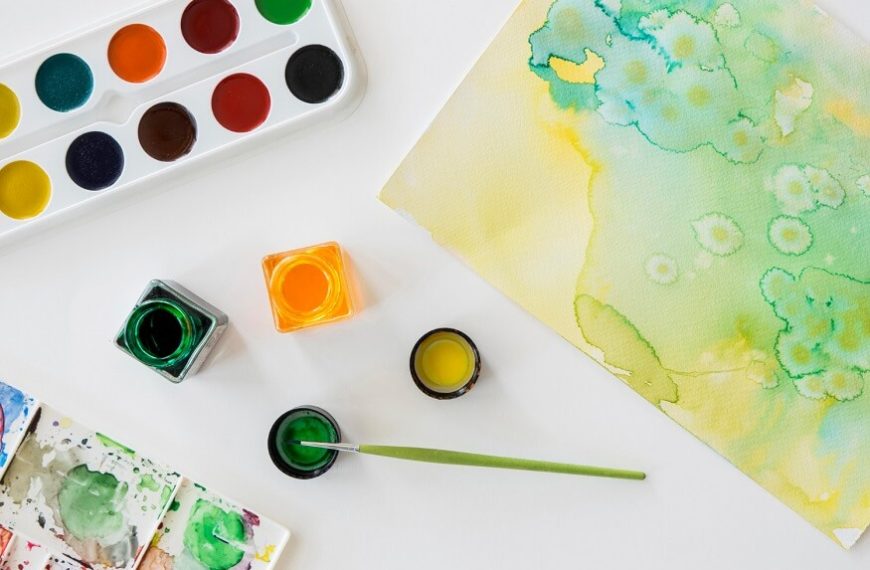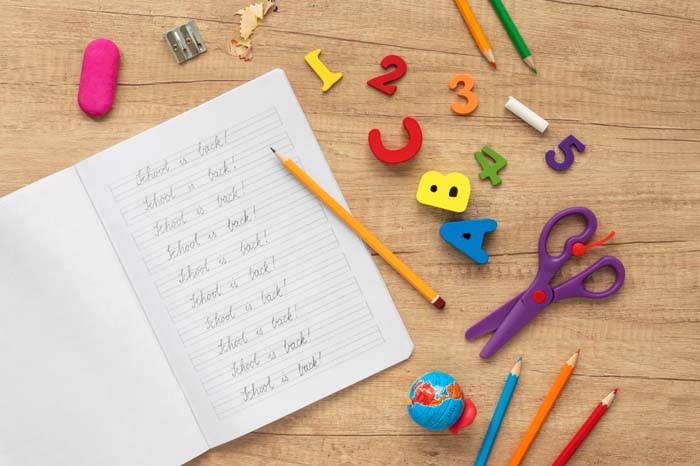What is watercolor paint?
Watercolour painting for preschoolers is a creative and tactile activity where young children use water-based pigments to express themselves on paper. This art form introduces them to colours, shapes, and basic painting techniques, fostering fine motor skills and hand-eye coordination. The simplicity of watercolours allows preschoolers to freely explore their imagination, encouraging self-expression and creativity. In this blog, we will learn how to paint with watercolours and watercolour painting ideas for preschoolers.
- Gather Supplies:
- Prepare the Workspace:
- Introduce Colours:
- Demonstrate Techniques:
- Encourage Creativity:
- Experiment with Tools:
- Explore Nature Themes:
- Teach Clean-Up:
Assemble watercolour paints, brushes, watercolour paper, water cups, and a protective table covering to minimize mess.
Set up a dedicated painting area with enough space for each child. Ensure the surroundings are easy to clean.
Begin by introducing the colours available. You can name the colours and ask children to identify them.
Show basic techniques like brush strokes, blending colours, and the concept of wet-on-wet painting. Keep the instructions simple and encourage experimentation.
Allow preschoolers to express themselves freely. They can paint shapes, and simple objects, or even engage in abstract art.
Introduce different tools like sponges, cotton swabs, or even fingers to create various textures and effects.
Connect painting activities with nature by encouraging children to paint flowers, trees, or animals.
Emphasize the importance of cleaning brushes between colours and properly cleaning up the workspace afterward.
Watercolour painting Ideas:
Here are some amazing art projects for preschoolers with easy watercolor paint.
- Rainbow Art:
- Bubble Wrap Printing:
- Salt Painting:
- Vegetable Stamps:
- Handprint Animals:
- Underwater Scenes:
- Nature Collage:
- Silhouette Painting:
- Blow Painting:
- Wet-on-Wet Galaxy:
- Handprint Flowers:
- Colour Mixing Ice Cubes:
- Butterfly Symmetry:
- Tissue Paper Resist:
- Watercolour Resist Art:
- Dot Marker Painting:
- String Painting:
- Bubble Painting:
- Colourful Monsters:
- Nature Impressions:
Introducing the concept of rainbows and letting preschoolers paint their interpretation of a rainbow using various colours is one
of the beautiful watercolour painting ideas.
Advantages: Teaches colour recognition, and sequencing, and encourages the exploration of different hues.
Dip a piece of bubble wrap in easy watercolor paint and press it onto paper to create textured prints.
Advantages: Introduces texture and patterns, enhances fine motor skills, and provides a sensory experience with the bubble wrap.
Apply watercolour to paper and sprinkle salt on top. Watch as the salt creates unique patterns as it interacts with the paint.
Advantages: Demonstrates the reaction between salt and watercolours, fostering curiosity and creativity.
Vegetable Stamps is one more interesting art project for preschoolers. Cut vegetables like potatoes into shapes, dip them in watercolour,
and stamp them onto paper.
Advantages: Combines art with sensory exploration, introduces basic shapes, and encourages creativity with unconventional tools.
Dip the palm of a hand in watercolour and create handprints on paper. Transform the prints into animals by adding features.
Advantages: Enhances fine motor skills, introduces basic animal shapes, and allows personalization through creativity.
Paint an underwater scene with fish, seaweed, and other sea creatures using watercolours.
Advantages: Encourages imagination, introduces marine life concepts, and provides an opportunity for storytelling.
Collect leaves, flowers, and other small items from nature. Paint them with watercolours and create a collage on paper.
Advantages: Integrates nature into art, promotes outdoor exploration, and develops an appreciation for the environment.
Paint a colourful background and add a silhouette of an object or person using a dark watercolour.
Advantages: Teaches the concept of silhouettes, explores contrasts, and encourages experimentation with negative space.
Drop watercolour droplets onto paper and blow on them using a straw to create unique and abstract patterns.
Advantages: Develops breath control, introduces the element of unpredictability, and enhances fine motor skills.
Apply a wet base on paper and drop various colours onto it. Watch as the colours blend and create a galaxy-like effect.
Advantages: Introduces the wet-on-wet painting technique, encourages creativity in imagining space, and explores colour blending.
Create flowers by turning handprints into petals and adding stems and leaves.
Advantages: Combines art with a tactile experience, enhances fine motor skills, and introduces the concept of symmetry.
Freeze watercolour paint in ice cube trays. Allow preschoolers to paint with the melting ice cubes.
Advantages: Explores colour mixing as the ice cubes melt onto paper, introducing a unique and interactive element to the painting.
Fold a piece of paper in half, paint one side with watercolour, and fold it again to create a symmetrical butterfly when unfolding.
Advantages: Teaches the concept of symmetry, enhances fine motor skills through folding, and allows for creative exploration of butterfly patterns.
Draw a design on watercolour paper using white crayons, then paint over it with watercolours.
Advantages: Demonstrates the resist technique, introduces texture and allows for the creation of intricate patterns.
Draw or write on paper using oil pastels, then paint over it with watercolours.
Advantages: Introduces the resist technique, combines different art mediums, and allows for the creation of vibrant and textured artwork.
Use dot markers to create patterns or images on paper. Connect the dots to form shapes or let the dots stand alone.
Advantages: Enhances fine motor skills, introduces pointillism, and encourages creativity with a simple yet effective tool.
Dip a piece of string in watercolour and lay it on paper. Pull the string to create unique patterns.
Advantages: Introduces texture and patterns using strings, enhances fine motor skills, and allows for experimentation with different string movements.
Mix watercolour with dish soap, blow bubbles onto paper, and press the paper onto the bubbles to create prints.
Advantages: Combines science and art, introduces the concept of bubbles, and creates dynamic and unpredictable patterns.
Paint whimsical and colorful monster shapes on paper using watercolours.
Advantages: Encourages imaginative thinking, allows for the creation of unique and personalized monsters, and fosters a love for storytelling.
Collect leaves, flowers, or other textured items from nature. Press them onto watercolour paper to create impressions, then paint around them.
Advantages: Integrates nature into art, explores texture through impressions, and encourages outdoor exploration.
We at EuroKids know the valuable contributions painting makes toward the development of children. Watercolour painting for preschoolers is a valuable and enjoyable activity that not only introduces them to the world of art but also nurtures essential developmental skills. Through these painting ideas, children can explore their creativity, learn about what is watercolour paint and how to paint with watercolours and textures and experience the joy of self-expression. The advantages extend beyond the artistic realm, contributing to their overall cognitive and emotional development in a fun and engaging way.
















